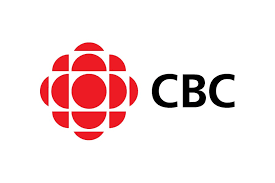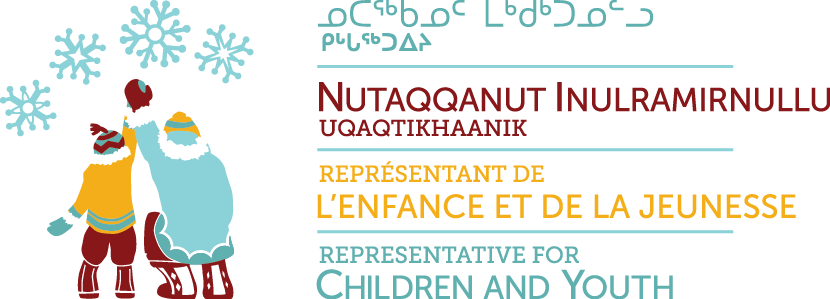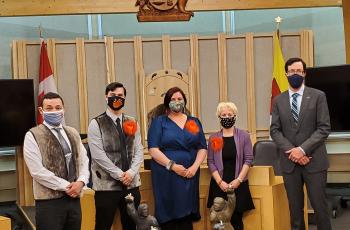Opening Comments by the Representative for Children and Youth
June 21-22, 2021
Thank you, Mr. Chairman, and good afternoon. Joining me today are Lynn Matte, Director of Child and Youth Advocacy Services, and David Korgak, Manager of Individual Advocacy Services. I would also like to acknowledge the officials from the four main child- and youth-serving departments, which our office works with on a regular basis: the Department of Education, the Department of Family Services, the Department of Health, and the Department of Justice. I am pleased that the Standing Committee requested your presence and participation in today’s proceedings. Welcome.
As you all know, the Representative for Children and Youth’s Office is an independent office of the Legislative Assembly of Nunavut. As such, it is my office’s responsibility to make sure that the services and supports offered and provided by the Government of Nunavut are ethical, equitable, and consistent for each and every young Nunavummiut, and their families.
Before I go any further, the staff at the Representative for Children and Youth’s Office and I would like to acknowledge the many, many people that work tirelessly to provide the services we all rely on and do so with the best interests of all Nunavummiut in mind. We see you. And thank you.
However, as is the role of an independent office, what is brought to our attention are the complaints, the problems, and the gaps. We bring these concerns to your attention so that we can work together to improve services for young Nunavummiut and this is what we are all here to discuss today.
The 2019-2020 fiscal year was busy.
- My office received the highest number of complaints to date and we opened 98 new individual advocacy cases.
- We released our first systemic report titled, Our Minds Matter: A Youth-Informed Review of Mental Health Services for Young Nunavummiut.
- We changed the way we deal with and report on systemic issues and made a total of 33 recommendations to government.
- Based on feedback received from our stakeholders, we revised the way we explain our work.
- We engaged our Elder advisors to ensure our interpretation of how Inuit Societal Values and child rights, as outlined in the United Nations Convention on the Rights of the Child, work together.
- And all across the territory, we connected with more than 1,100 young people, offering our Raise Your Voice: Self-Advocacy workshop and our Sila is Cold: The Igloo Game activity… just to name a few things my office did this year.
With this is mind, I hope we use the knowledge of my office to acknowledge the shortcomings and gaps in services that we know exist, and work together to take corrective action to address these problems while keeping the best interests of young Nunavummiut, their families, and the future of Nunavut as a whole, in mind.
As many of you have noticed, our 2019-2020 annual report is quite different from previous years. The changes that you see in this annual report were made based on feedback provided to my office from the Management and Services Board and Standing Committee. After we released the 2019-2020 annual report and it received exposure from the media and in the Legislative Assembly, we received mixed feedback from departments regarding the format and content. Some departments wanted to work with us to ensure the information was as accurate and complete as possible and some did not, citing privacy as a concern. I welcome feedback from the Standing Committee on the revised format and content of our annual report.
One of the biggest changes to our report is the addition of the Status of Young Nunavummiut section. As I mention in the Representative’s Message the purpose of the section is to provide base line information that could be used by decision makers, such as yourselves, to inform your decisions and assist in providing a clear, collaborative, proactive way forward, together. As such, we will continue to provide this section year after year.
I would like to clarify that the information presented in the Status of Young Nunavummiut section is not our information. It was provided to my office by government departments. It took my staff many hours to sift through, decipher and clarify what was provided. Prior to publishing our report, we provided departments with a copy of their page and gave them the opportunity to provide further feedback or clarification to confirm the accuracy of the final publication.
Through this process, what my office learned, and what I think we all here today learned, from the evidence on these pages, is that the majority of basic information about government services for young people is not being tracked accurately or consistently. And what this leads me to question is, how is this government making decisions? How are decisions about programming being made? How is funding being allocated? How are the needs of young Nunavummiut being met if we don’t know how many people are accessing which services. And the most important question, who is accountable for these decisions?
Since tabling our 2019-2020 annual report, it has been referenced numerous times in the Legislative Assembly, mainly when questioning the accountability of government departments. This is the purpose of our report. This is the purpose of the work of my office. It is the responsibility of my office to bring these issues, stemming from the gaps and problems with services, to your attention. And it is the responsibility of my office to hold government departments accountable for the improvements that need to be made. But, the responsibility for acknowledging the need for improvement, taking corrective action, and making improvements lies with the government. My office did not create these issues; in fact, many of them have existed and departments have been aware of them for years, with little or no action being taken to address them. But, we must turn our focus to the urgent action required to fix these problems and close the gaps.
Behind every statistic in our report, every recommendation made, and every problem or issue brought to my office’s attention for review, are children, youth, and families who are depending on us to help them live their best lives and make decisions considerate of their best interests. I call on all of you to rise to this challenge.
I look forward to a collaborative and constructive conversation. Thank you, Mr. Chairman.

Data gaps contributing to child sexual abuse 'crisis' in Nunavut

Watchdog calls rate of child sexual abuse in Nunavut a crisis


